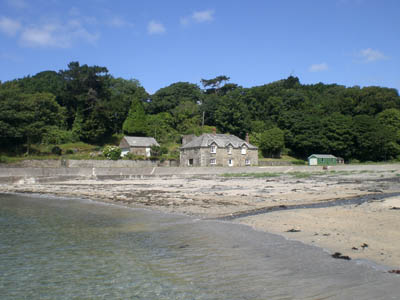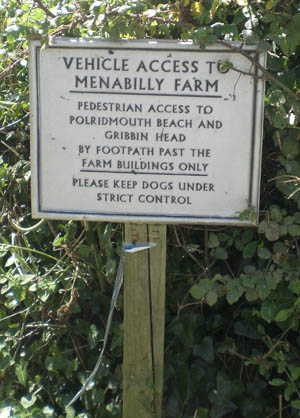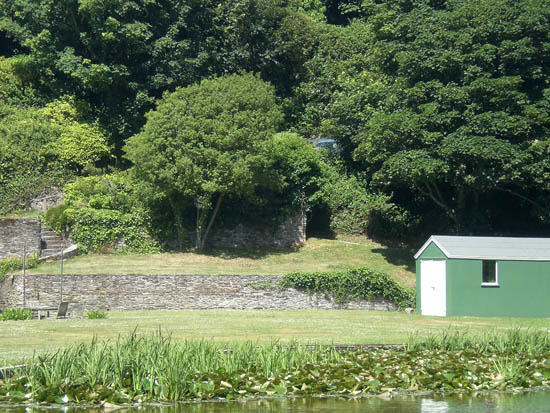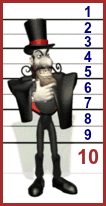
HOME





HOME
|

|

|

|

|
|
P R O F I L E |
||||
|
  Menabilly Grotto
Menabilly GrottoPolridmouth Beach Fowey Cornwall United Kingdom PL24 2TN Telephone: 01726 812844 (farm) There is no direct public access to this grotto which lies in the grounds of a cottage on the picturesque beach by a lake. Parking is available about half a mile from the beach. You then need to follow the path down to the shore, leaving fifty pence in the milk churn at Menabilly Barton Farm to cover the cost of your parking. When you reach the shore take the footpath left to the next beach along and you will come across a substantial cottage on the left. The solitary cottage is private property and not open to the public. The grotto is believed to be in the grounds behind the cottage. The Grotto, about 1/2 mile south east of Menabilly House, comprises a late C18 octagonal "folly" built of rounded quartz boulders with joints embellished with sea shells. The inside walls were lined with shells and crystals, ores and polished stones but most of these have been removed. There are four arched openings, two of which are blocked. There are small gable heads above each wall but it is now roofless and in poor state. The grotto is Grade II listed by English Heritage and part of the Menabilly estate. Menabilly has been the seat of the Rashleigh family from the 16th century to the present day. The Rashleigh family of Menabilly originated as powerful merchants in the 16th century. The mansion house, which received a Grade II* listing on 13 March 1951, is early Georgian in style, having been re-built on the site of an earlier Elizabethan house, parts of which were possibly incorporated into the present structure. The house is surrounded by woodland and nearby is the farmhouse Menabilly Barton. In the Return of Owners of Land, 1873 Jonathan Rashleigh of Menabilly, Par, was listed as the largest landowner in Cornwall with an estate of 30,156 acres (122.0 km2) or almost 4% of the total area of Cornwall. The present house is of two storeys built around a central courtyard with a six-bay front on which the central 3 bays break forward. Philip Rashleigh (1729-1811) landscaped the gardens and planted the woodland around the house and estate. William Rashleigh, his nephew, succeeded after Philip's death in 1811, and following a fire in 1822 rebuilt the house greatly extended in size. In the 20th century the house was rarely occupied and thus fell into serious decay. In 1943 it was discovered in a dilapidated state by the new tenant Daphne du Maurier the author, who set about restoring it and made it her home before returning it to the Rashleighs in 1969.  Following in the steps of Daphne du Maurier, Linda Cookson steps back in time in 2007 exploring the locality.
Following in the steps of Daphne du Maurier, Linda Cookson steps back in time in 2007 exploring the locality.
The coastal path dipped down into tiny Polridmouth Bay (pronounced Pridmouth). This is where Rebecca country begins. A notorious blackspot for shipwrecks, the bay had a strangely brooding atmosphere - perhaps because the weather was so bleak. The beach of slate-blue pebbles backed onto a waterfront lake, fed by a stream emerging from high above, from within the dark woods of the Menabilly estate. The only signs of habitation were a small cottage and boat house. This was the cottage where Rebecca held her romantic trysts, the boathouse from which she launched her sailing boat, and the bay where the scuttled craft was washed up. The climb from Polridmouth Bay to the gates of Menabilly was to be my Road to Manderley. First, though, I crossed a second sandy beach, known as Menabilly beach. This is where du Maurier picnicked with her family and where, if you'd been a du Maurier/Browning child in the 1940s, you would have had the experience of encountering the exploding cow. The beach was land-mined then, a throwback to wartime when it was lit up at night as a decoy for Fowey harbour. The unfortunate creature who went there to graze was blasted into two trees, from which its various body parts allegedly hung suspended for over two years. The ascent towards Menabilly was lovely. First I walked through another leafy tunnel of hedgerow and trees, with the wind whistling through the foliage all around me. The only other sounds were of birdsong - and the crunch of my own (by now muddy) boots on gravel. Then the path widened into a shady lane, part-arched by trees and dense with dark ivy and red campion. To the right were the mysterious woods of Menabilly; to the left was the cheerful normality of Menabilly Barton farm, whose lands provided the setting for both My Cousin Rachel and The Birds (although Hitchcock transported the latter to the coast of California). But then, inevitably, came an anti-climax of sorts. Passing a car park, I joined a country road. The tarmac was a useful wake-up call to reality. 
The site of the grotto is believed to be up the steps behind the cottage. We have not been able to secure a picture yet but would appreciate any further information or illustrations.Website: Click Here ADDITIONAL INFORMATION  
GREAT BRITISH GROTTO GRADING
CONSTRAINTS Not open to the public, On private property, Physical access difficult FACILITIES Grotto - just one, Hotel or B and B Facilities LANDSCAPE Coastal, Quality Natural Environment, Woodlands or Forest REGION England - Southern THE FEATURES PRESENT +Internal stonework that is natural, recycled or simulated to give a subterranean decor, +Stunning setting and location, GRADED TWO |
||||
|